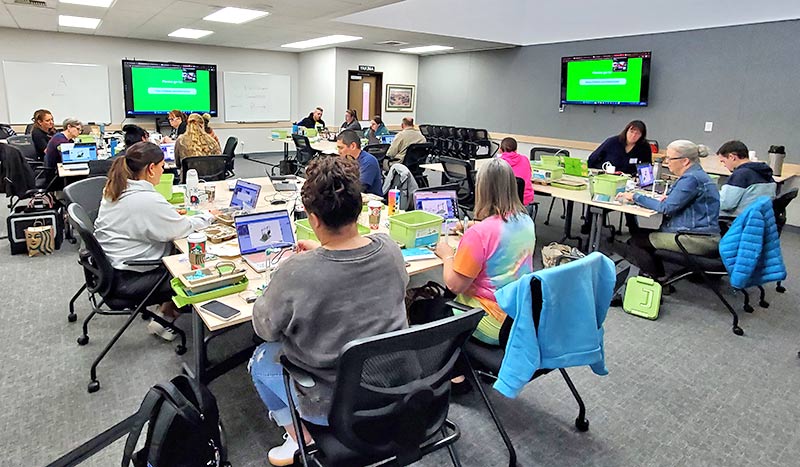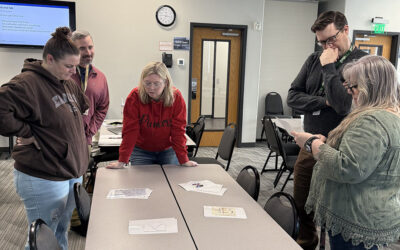Empowering Educators Through Coding and Climate Action!

SUCCESS with constructing a mobile irrigation vehicle
In today’s rapidly evolving digital world, understanding how computers and coding shape our society is increasingly important. This project aims to challenge stereotypes that primary and secondary students may hold about technology and computer science. By engaging educators in coding with a focus on climate change, the project empowers teachers to help students learn about environmental issues and explore innovative solutions.
Building on the success and positive feedback from previous years, this professional development session was offered for the third year. It was an excellent opportunity for ESD 105 Regional Science Coordinator Luke Matlack and ESD 105 Computer Science/Ed Tech Coordinator Mike Batali to collaboratively guide teachers in integrating computer science, computational thinking, and climate science into their classrooms.
A Hands-On Learning Experience

Assembling and testing the water pump
During this full-day session, participants explored strategies for using micro:bit devices and the Climate Action Kit to enhance classroom instruction. They developed a deeper understanding of how computational thinking can be emphasized in lessons and discovered connections between the Washington State Science Standards (NGSS), K-12 Computer Science Learning Standards, and Educational Technology Standards.
The day began with an introduction to the four pillars of computational thinking: Decomposition, Pattern Recognition, Abstraction, and Algorithmic Thinking. Teachers engaged in a collaborative card-sorting activity to identify these pillars and their applications in classroom settings. This interactive exercise set the stage for hands-on coding with micro:bit devices, allowing participants to build confidence with block-based programming.
Real-World Applications in the Classroom
The session featured curriculum-aligned lessons and coding tutorials designed to engage students through real-world problem-solving and climate action projects. A few of the lessons that participants explored were:
- Protecting Pollinators with a Bee Counter
- Power Storage for Wind Energy
- Data-Driven Smart Farming
- Wildfire Detection with Autonomous Vehicles
These lessons provided practical examples of how educators can integrate computational thinking and coding to address pressing environmental challenges.
At the conclusion of the session, participants shared their insights:
-

Working together to assemble the windmill
“Hands-on learning is key for engagement.”
- “I made great connections between our science units and the computer science lessons.”
- “Coding and computer science isn’t as intense as I thought.”
- “I learned how to integrate computational thinking and computer science into my classroom.”
This professional development opportunity not only equipped educators with tools and strategies but also inspired them to incorporate technology and coding into their teaching practices in meaningful ways.




